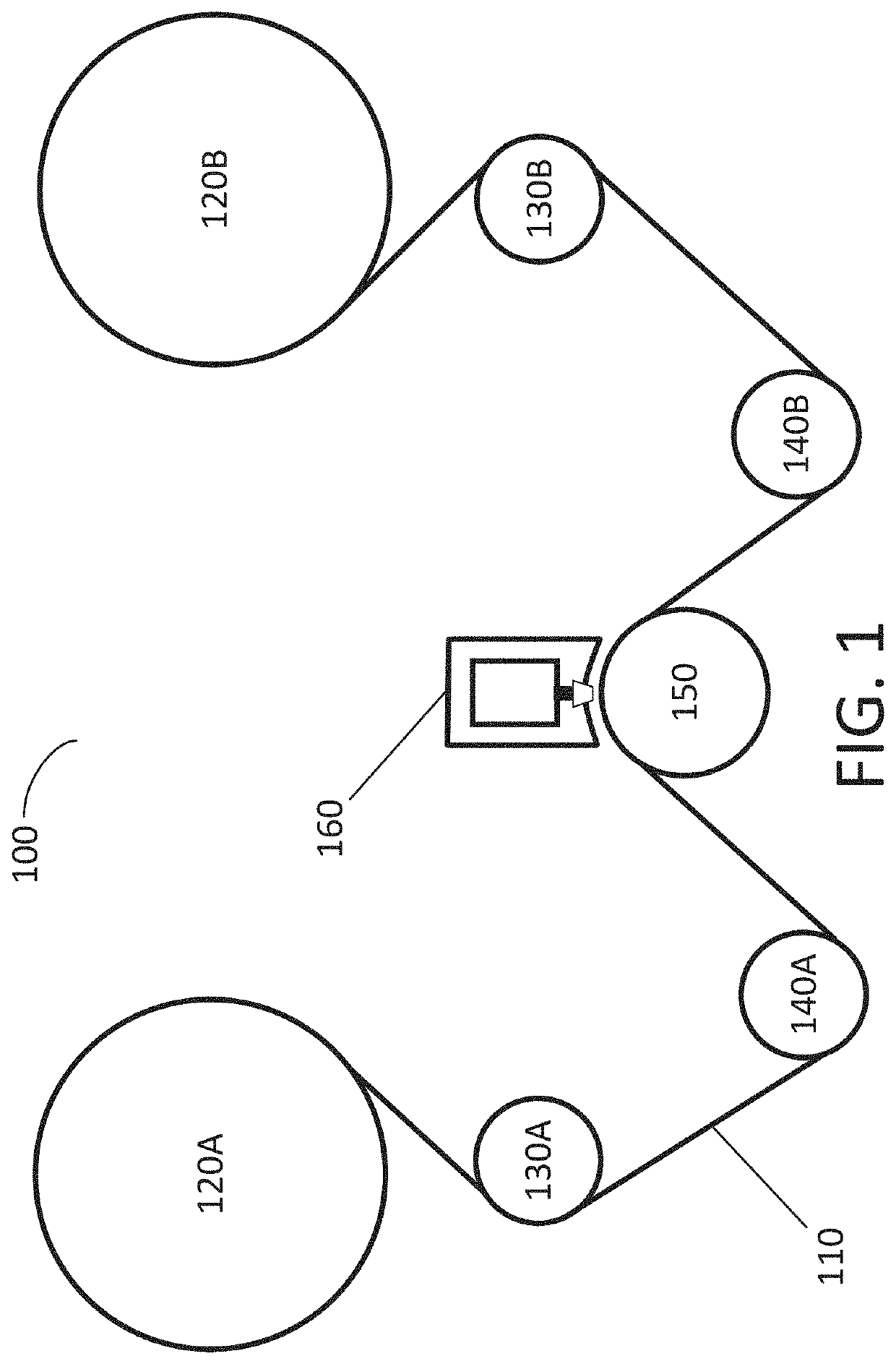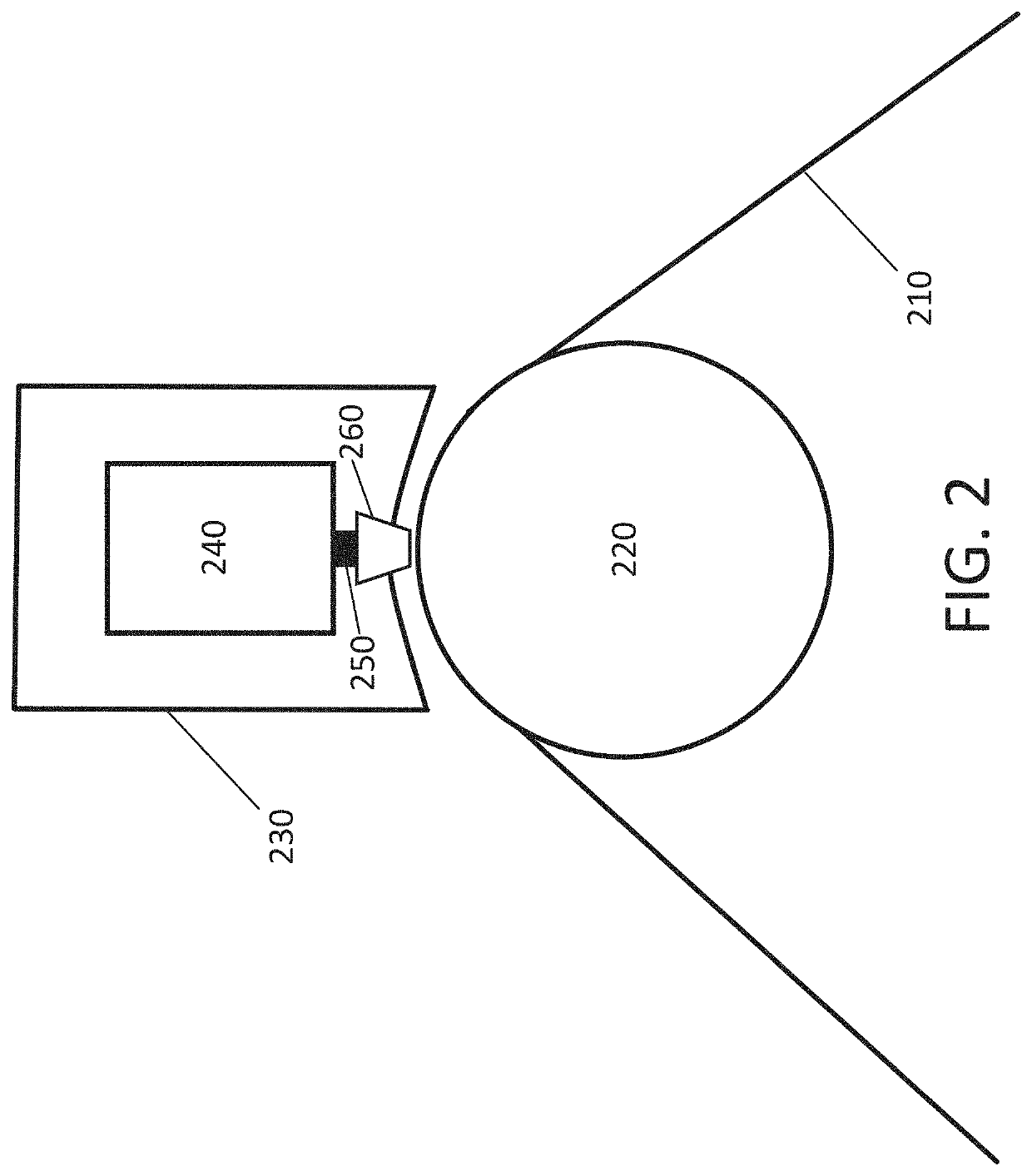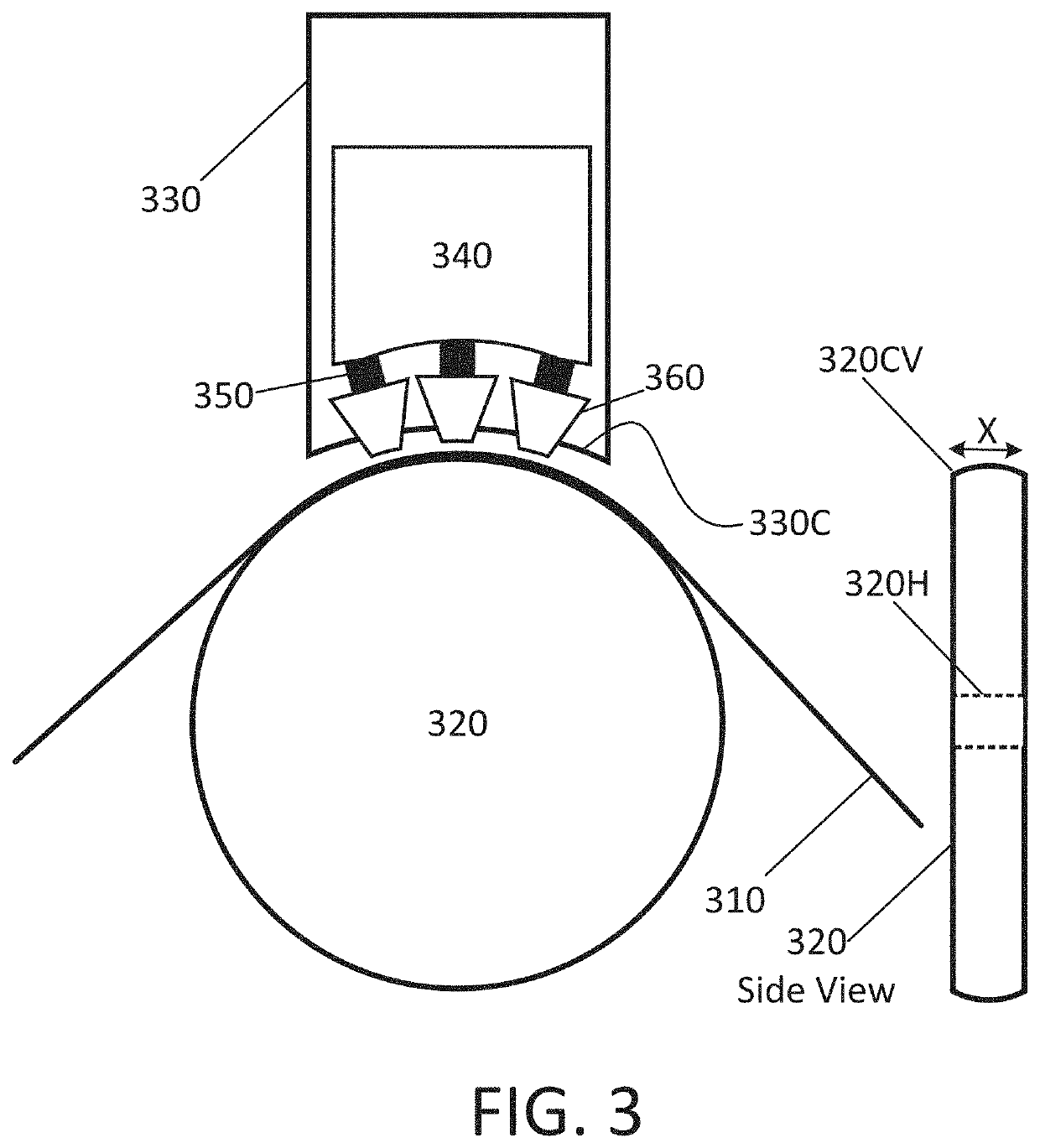Active spacing control for contactless tape recording
- Summary
- Abstract
- Description
- Claims
- Application Information
AI Technical Summary
Benefits of technology
Problems solved by technology
Method used
Image
Examples
Embodiment Construction
[0027]The present invention relates to the field of tape drives, tape transport, tape heads and tape head suspension. More particularly, the present invention is related to magnetic tape data storage and tape recorders that include components designed to minimize or eliminate head-to-tape contact to reduce or eliminate wear and contamination of tape drive heads. Methods and apparatus of the present invention may dynamically control the head-to-media spacing by moving locations of magnetic heads relative to a tape. Apparatus consistent with the present disclosure include components designed to minimize magnetic spacing. This may be accomplished using actuators that move the magnetic heads, that move the tape, or that move both the magnetic heads and the tape. This may include supporting a back surface of the tape. Alternatively, or additionally, the movement of the tape past the magnetic heads may be performed using mechanisms that contact and drive the back surface of the tape. For ...
PUM
 Login to view more
Login to view more Abstract
Description
Claims
Application Information
 Login to view more
Login to view more - R&D Engineer
- R&D Manager
- IP Professional
- Industry Leading Data Capabilities
- Powerful AI technology
- Patent DNA Extraction
Browse by: Latest US Patents, China's latest patents, Technical Efficacy Thesaurus, Application Domain, Technology Topic.
© 2024 PatSnap. All rights reserved.Legal|Privacy policy|Modern Slavery Act Transparency Statement|Sitemap



